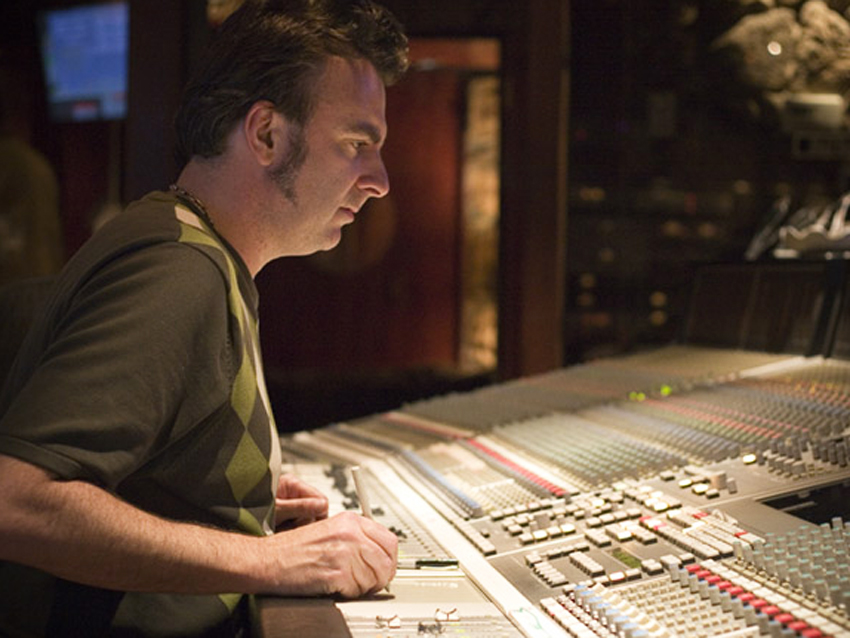
Production legend Tim Palmer on 14 career-defining records
Although he's manned the board in a variety of capacities for some of the world's biggest acts, producer and mixing engineer Tim Palmer originally envisioned his life unfolding on the other side of the studio glass. As a teenager, he played guitar and sang in a band called Emergency Exit. There was just one little problem with his rock dream: While he demonstrated an intuitive flair for layering instruments on the band's early demo recordings, his singing wasn't blowing anybody away.
"I enjoyed the construction aspect of record making," Palmer explains. "Gradually, I started to think about ways I could still be involved in music world without being an artist. When I got my first opportunity to be a tea boy in a studio, I jumped at it.”
At London's Utopia Studios, Palmer fetched tea, brewed coffee and learned the ropes from producers like Richard James Burgess, Pete Walsh and Rod Temperton. While assisting Colin Thurston, who at the time was co-producing a new band called Kajagoogoo with Nick Rhodes from Duran Duran, Palmer got his first real chance to show what he could do working with musicians on his own. During tracking sessions, Thurston and Rhodes would often leave in the early evenings, giving Palmer a few hours to record guitars and assorted overdubs with Kajagoogo. Impressed with Palmer's tracks, Thurston asked his assistant to tackle recording some B-sides with the band.
"Everybody was happy with them, so I asked the band if I could have a co-production credit, which they agreed to." Palmer says. "The label liked the B-sides so much, they put them on the album. So, in one sweep, I went from assisting to co-producing two tracks on the album, and that turned out to be my first gold record.”
Over the year, he's added more of those shiny discs to his collection, including an enviable number of platinum and multi-platinum awards, too (Pearl Jam's Ten, which Palmer mixed, has racked up sales of over 10 million copies in the US alone, placing it in the RIAA's "diamond" category).
Perhaps owing to his lifelong love of raucous guitar rock, one of the hallmarks of Palmer's talents is his uncanny way of buffing and polishing edgy alternative bands for radio consumption without defanging them. As it turns out, some of his own musical chops have come in handy. “These days, I am even playing and adding parts at the mixing stage," he says. "If I think something needs another guitar part or some keyboards, I’ll just add them myself. If the artist doesn't like what I’ve done, I can just hit ‘mute.’ At least I give them everything I've got."
Explaining his philosophy in the studio, Palmer says that he's careful not to impose his own sensibilities on an artist's sound – "It's their record, not mine" – and in the end, the song is ultimately king. "You can sculpt and improve, but if the material isn’t there, you can only do so much," he says. "I’ve worked with many artists more than once, and they know that I’m going to work with them to help them get to where they want to go.”
On the following pages, Palmer looks back at the recording of 14 especially notable albums of his career.
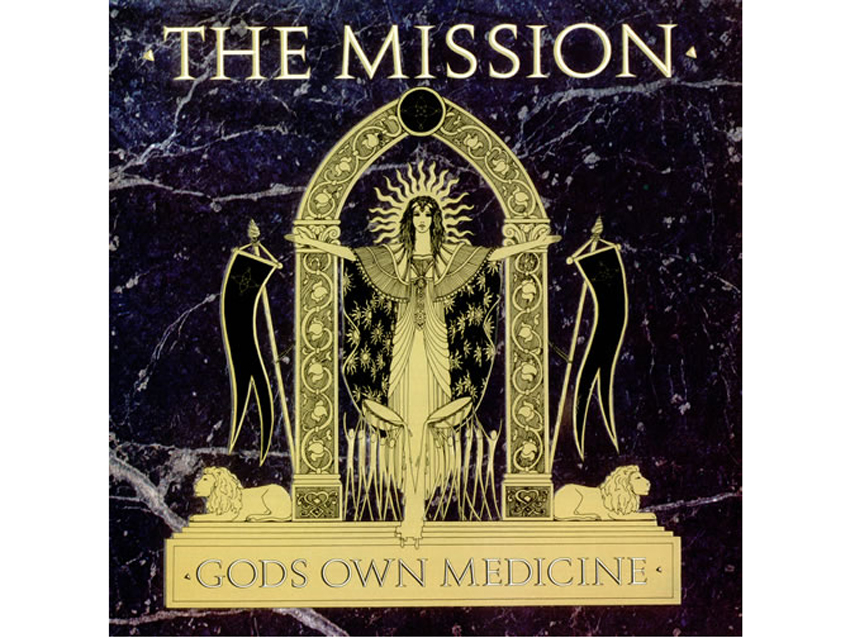
The Mission - God's Own Medicine (1986)
“I had worked with Dead Or Alive on an album called Sophisticated Boom-Boom, on which we recorded a cover of That’s The Way I Like It. This became the band’s first chart hit. Wayne Hussey, the singer and guitar player from The Mission, was the guitar player in Dead Or Alive, so we became friends.
“Later, after being frustrated in Dead Or Alive, he went off to do his own thing, and he asked me to get involved in the production. This was fantastic opportunity for me as it was the first time I was associated with something so cool and alternative.
“If you listen to it now, it sounds very ‘80s, with all the big snare reverbs. Guitar-wise, we would get pretty crazy with the treatments and would often record four or five tracks of a clean sound and then overlay many dirty tracks, building and layering the parts. We would then double again with acoustic guitars – a lot of layers, a lot of fun.
“If I had to sum up the record in one word, it would be ‘speedy,’ and I mean that it more ways than one. We recorded the whole album in five weeks. The record was pretty successful and went silver in the UK. I figured I was a shoe-in for the production of their follow-up album, but they went off and recorded with John Paul Jones. I was gutted. Of course, it was a good feeling when they made their third album and returned to me for production duties.”
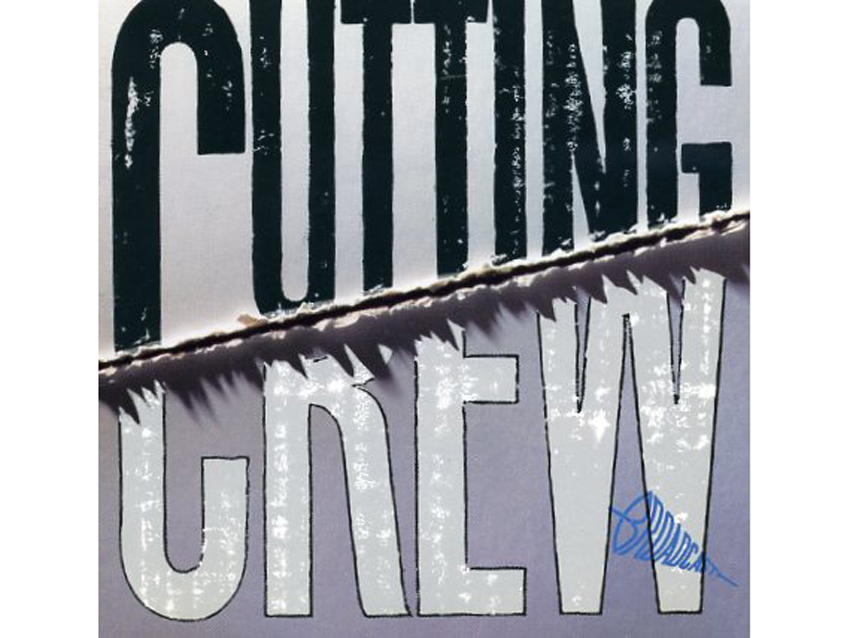
Cuting Crew - Broadcast (1986)
“This was a big record for me because I got to mix it at the point when I was merely the studio house engineer. That rarely happens these days. The single, (I Just) Died In Your Arms Tonight, was a massive hit. It’s a great song. How can you go wrong with something so beautifully written? I’ve always said, ‘The best cure for a bad mix is a great song.’ But I think the mix is pretty good, too.
“I remember Kevin MacMichael fondly. We met again later when he joined Robert Plant’s band. He was a brilliant guitarist. He died in 2002 – lung cancer, I think. It was very sad. A really, really great guy and great guitar player. He always had such cool ideas up his sleeve.”
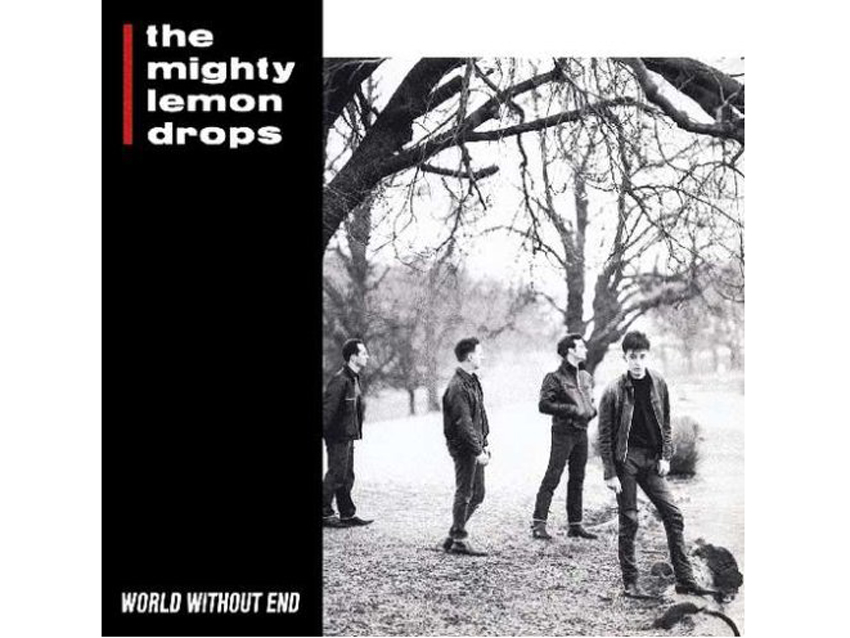
The Mighty Lemon Drops - World Without End (1988)
“What a fun album this was. We recorded it at Rockfield Studios in Wales. It was one of those records where you just have a great time from start to finish. I’m still very good friends with Dave Newton, the guitar player. I have an electric 12-string guitar that I swapped with him for my old pair of Yamaha NS-10s. I think he still mixes on them.
“It took a while to get the drum sound, and at one point Chris Blackwell, the drummer from Robert Plant’s band, drove over and helped us set things up.
“There’s a great single on the album called Inside Out – it got a lot of play on K-Rock. It was wonderful to hear it when I was recording in America. The album was number one on the Rolling Stone college chart.”
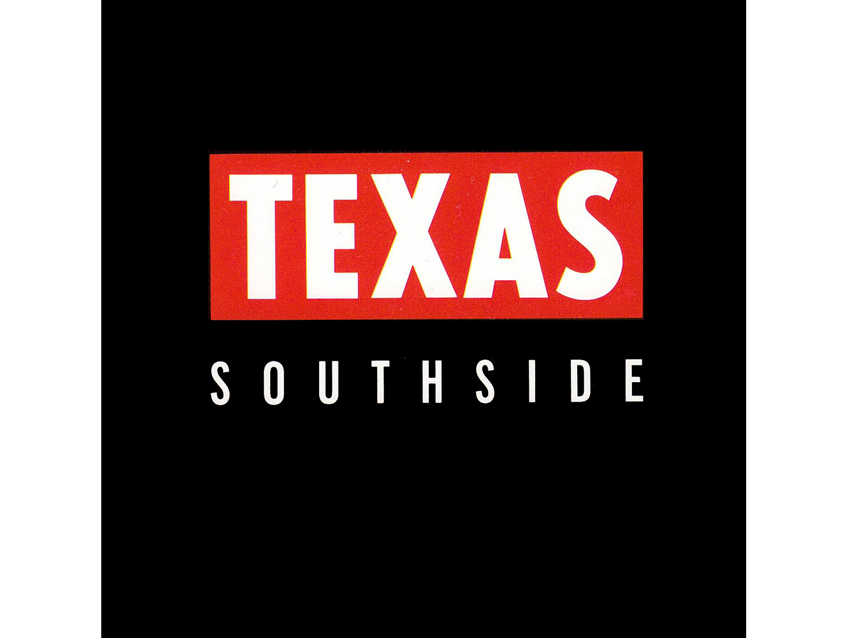
Texas - Southside (1988)
“I was pretty young when I made this record. It was an important album for me because I was working with a very new band, and at the same time I achieved my first Top 10 single. This was a great boost for me.
“Johnny McElhone, the bassist, had been in the bands Hipsway and Altered Images, so he’d been around, and he knew what was what. Sharleen Spiteri, the singer, was very new to everything and very young. Until then she had been a hairdresser – Johnny had only recently discovered her and suddenly she found herself in a band making her first record. She took direction well, with Johnny and I leading the way.
“Sharleen had done an amazing job on the demo for the song I Don’t Want A Lover – absolutely fabulous. She tried to re-record it several times for the album, but she could never beat what she’d done on the demo. This was all pre-Pro Tools, but I managed to fly in the vocal from the demo, line by line. The label loved it and commented on how I had got a great vocal out of her.”
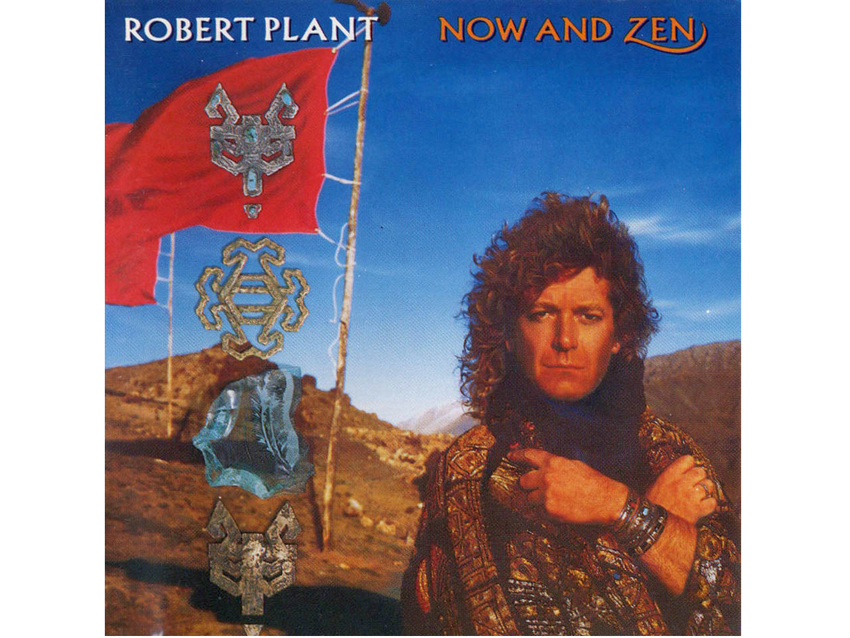
Robert Plant - Now And Zen (1988)
“I had been part of the previous album, Shaken ‘N’ Stirred, and was brought in by Robert to work on this record. Robert didn’t want to work with the regular ‘rock guy’ producer; he wanted someone who had a knowledge of electronic music, as he was enjoying bands like Depeche Mode around this time. I had worked with a lot of electronic artists like Dead or Alive, John Foxx [Ultravox] and Kajagoogoo, so I seemed to fit the bill.
'The first time I actually did a session with Robert on Shaken ‘N’ Stirred, I felt very out of my depth because I honestly hadn’t recorded a lot of full drum kits before. I was part of the Linn Drum generation, and now, suddenly I’m in the studio with Richie Hayward [Little Feat] on drums and a full band lineup. So the Shaken ‘N’ Stirred album was a big learning process for me.
“For Now And Zen, there was a complete lineup change from the band of Shaken ‘N’ Stirred – I was the only returning face. The album featured less of a rock sound and more of an 80's aesthetic – keyboards, etc. Robert was enjoying this, but the label was not so happy; they were pushing for more guitars. That was a little bit difficult at times, but the album was a big success and is still his biggest solo recording.
“Robert asked Jimmy Page to play on the album, which was phenomenal. The day Jimmy arrived at the studio to add some solos, suddenly we had four assistants and the tech in the room, all ready to help. Everybody wanted to be there. That was a fun day.
“And for the first time, on Now and Zen, Robert acknowledged his past by using the Zeppelin samples on the song Tall Cool One. I remember I played the samples onto the track from a AMS harmonizer sampler. It was a lot of fun and all very tongue-in-cheek. It was Robert’s way of getting back at the Beastie Boys for pinching the When The Levee Breaks drums.
“To this day, Robert does exactly what he wants to do and is not influenced by the lure of the dollar. I respect that very much. He is a true artist, always ready to try new directions and keep learning.”
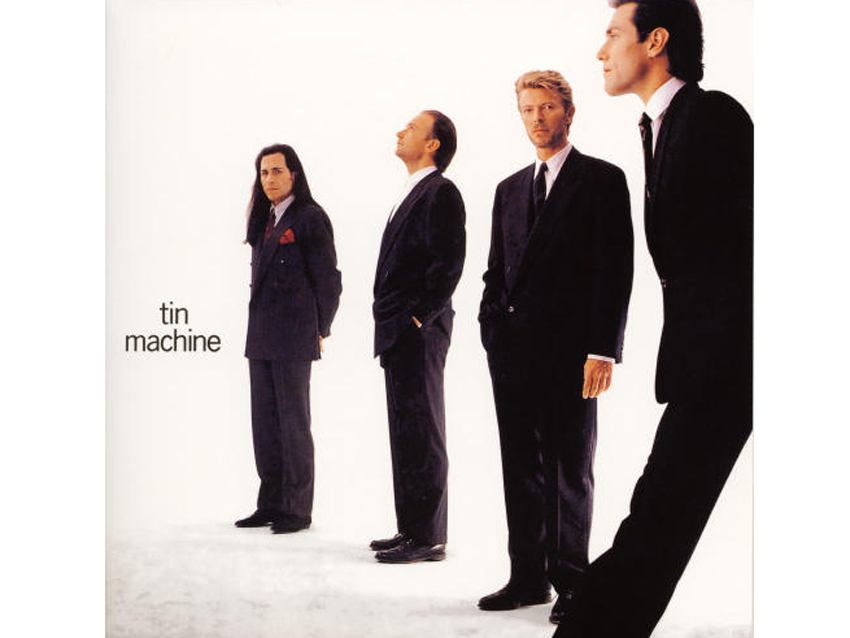
Tin Machine - Tin Machine (1989)
“Reeves Gabrels had a big part in me being involved in this record. Bowie was a hero of mine, obviously, and so the chance to work with him was incredible. Reeves and David were figuring out this project they were working on, and they were looking for somebody fresh who’d been working with guitar-type bands. At that point, I’d worked with The Mission, The House Of Love and The Mighty Lemon Drops, so I guess I was known as being a guitar-centered producer.
“David was up for trying somebody new. I remember getting a call from his manager: ‘You’re going to be getting a phone call from David Bowie.’ I waited by the phone, and David finally called to tell me that they were going to go to record in Switzerland, and that he wanted to make a lively, less polished kind of album. David isn’t the kind of guy where you say, ‘Can I just hear the demos?’ You just say ‘yes’ and go in.
“David wasn't looking to make a ‘radio single' type album. Like Robert Plant, he does exactly what he wants to do with no fear of consequence. In the context of Tin Machine, Reeves and David were listening to Sonic Youth, Glenn Branca and some pre-grunge music like Dinosaur Jr., so they were in that frame of mind. David wanted to have fun and re-introduce a bit of chaos into his music.
“We recorded in Mountain Studios in Switzerland, which is a studio basically connected to a old casino. The reverb that you hear on the drums of songs like Heaven's In Here isn’t really reverb at all; it’s the sound of the casino. David was quite enjoying the random, chaotic atmosphere, but it was a little tough for me at times. I would be still setting up and changing sounds on the drums, trying to get the EQ right, when they would say, ‘That’s it. That’s the take.’ Working with Bowie taught me to let go and not be so pristine.”
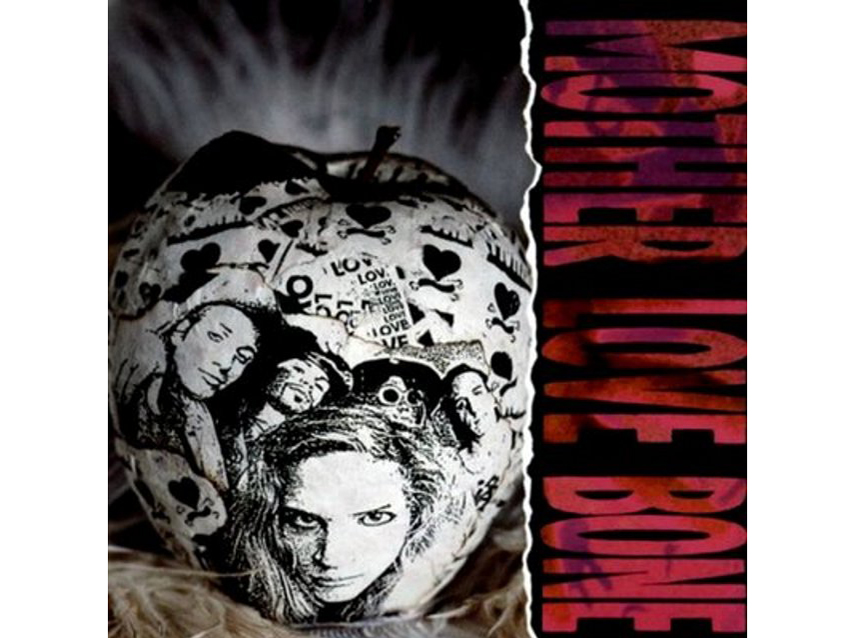
Mother Love Bone - Apple (1990)
“I got to know their A&R guy, Michael 'Goldie' Goldstone, and he wanted me to work on the record. It was an interesting album to mix because, for the first time, I didn’t actually meet the band – this is a quite common practice now. So I didn’t meet Jeff or Stone or any of the Pearl Jam future members during this record. I just spoke with them all on the phone a couple of times.
“I was locked into Sound Castle Studios in LA. Goldie would come by and listen to mixes with me. Even from the recordings, I thought that Andrew Wood was going to be a star. It’s tragic that his life was cut so short. I, of course, met Stone and Jeff later, during the making of the first Pearl Jam album.
“I liked all of the influences in their music. You could hear a little bit of The Cult; they had the rock thing, but they were somewhat experimental, too. I was given free reign to do what I wanted, really. It’s amazing how you can get things right if you just let the songs guide you.”
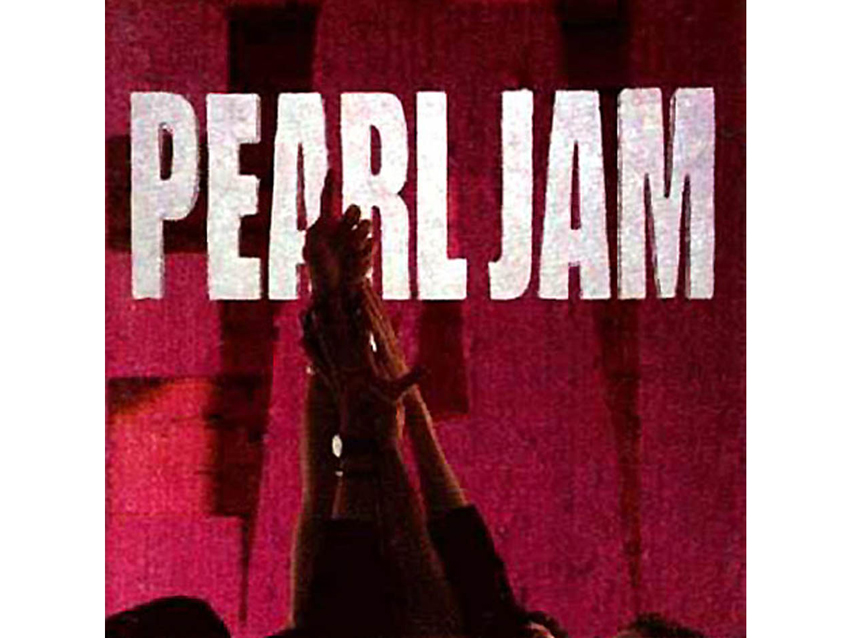
Pearl Jam - Ten (1991)
“This came about because of my work with Mother Love Bone and Michael Goldstone. For our first meeting, we all went to see the Lakers play, and that’s when I finally got to know the guys a little. Music at that time was still dominated by metal and glam bands from the Sunset Strip scene. When Nirvana and Pearl Jam happened, they immediately killed the hair metal bands, but at the time we actually started this record, I wasn’t really familiar with the Seattle sound at all.
“This record was mixed in about 10 days, very instinctively and with no pressure. The band flew over to England and was with me at Ridge Farm Studios in Surrey, where we mixed. Part of the reason why it was so non-pressurized was because the label wasn’t expecting too much; I think they were maybe hoping to sell 100,000 or 150,000 copies, which by today’s standards would be a lot, but back then, that many sales was considered a build-up.
“I wasn’t shy about using big drum sounds on songs or using effects like backwards reverbs on Eddie’s vocals; I was allowed to be as creative as I wanted to be. The band was all there and approved every mix when we met each morning. The simple dry sound of a raw band playing together in a room became something of the Seattle sound later. When we made the record, this had not happened yet.
“While the band might look back at their first album and say it was too wet or affected, they are looking over their shoulder; when we made the record, it was perfect. Radio lapped it up.
“You can move on and evolve, but you can't change your haircut in your high school yearbook.
“It's true that the record sounded big, but it still had some traditional rock elements to match. When you hear Mike McCready’s solo at the end of Alive, it almost has a Freebird-type thing at times. This all really helped rock radio to embrace the band. It was new and alternative, but there was still a bridge to a lot of the heritage bands they were used to playing.”
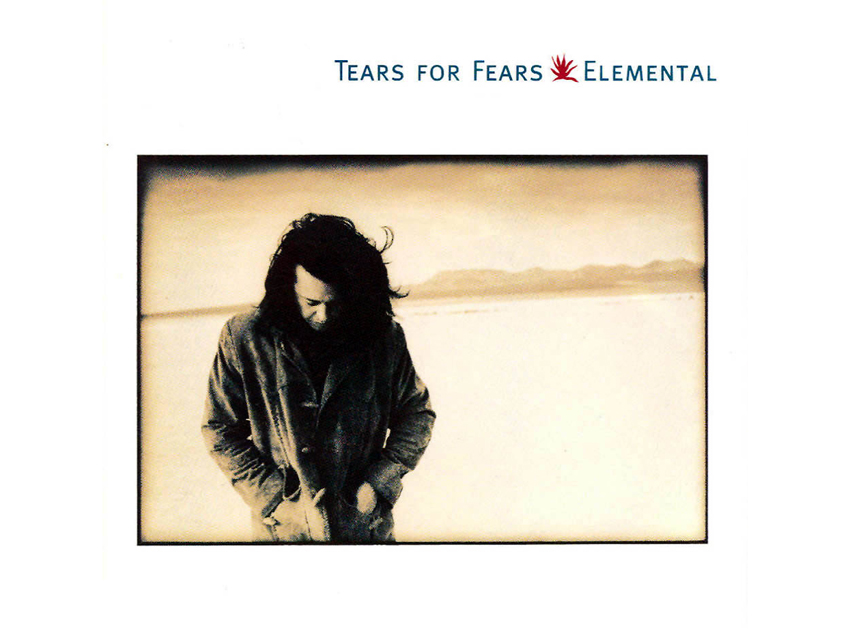
Tears For Fears - Elemental (1993)
“In the 80's, the band had a reputation for spending a lot of time making records, but that’s just the way they are. I tried to speed things up and got the record done in six months – not much of an achievement, but it was fast for them.
“We recorded in Roland’s studio, Neptune Kitchen. It was a very important album for him because it was the first one he made without Curt Smith. There was a lot of pressure on him. Actually, this was an important record for me, as well, because Roland was one of the first artists who responded to my input musically. I’d come to the studio in the morning and throw a couple of ideas up, hoping he might like them, and he’d come in and say, ‘That’s really great. We should work on that.’
“I played a lot of drums on the record, too. There was some editing involved, because I can’t claim to be the greatest drummer in the world. But I’m on there, and I played some guitars, as well. It was a great opportunity for me to add something musically to what I was producing.
“Roland is very into star signs. Before we started working on the record, he mapped out a composite start chart of us both, and he read it and said that he thought we would get along very well together, which we did. But he also said that he saw a lot of success coming my way very soon, and some money, too. I was like, ‘Oh, well, thank you!’ We figured it would be from the Tears For Fears project.
“During the six months we spent working on the album, I would buy a copy of Billboard every week, and I noticed that this little unknown Seattle band I’d recently mixed, Pearl Jam, were creeping up the charts, and they eventually got to the number two spot. I thought, ‘Maybe that’s the success Roland sees.’”
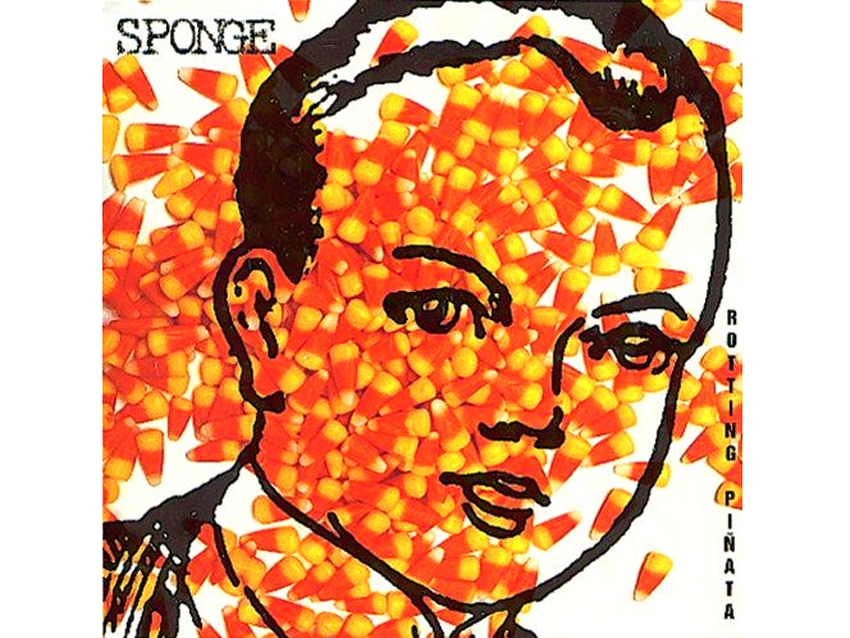
Sponge - Rotting Pinata (1994)
“Sponge were a great live band. Vinnie [Dombroski] is a wonderful frontman and is a good drummer, as well – I don’t know if a lot of people know that. It was a very ‘90s-sounding record; we still had the gated snares, which the label insisted on being quite up front.
"I used to hear the record on K-Rock all the time. We all hoped that the song Plowed was going to be a hit, and it did pretty well, but there was also song called Molly, and that turned out to be a big song, too. It’s a good album.
“The record was mixed at the Record Plant, during the crazy, high-budget days of the ‘90s. That was a great, slightly decadent studio. It had a Jacuzzi, and every room had two assistants. It was a lot of fun.”
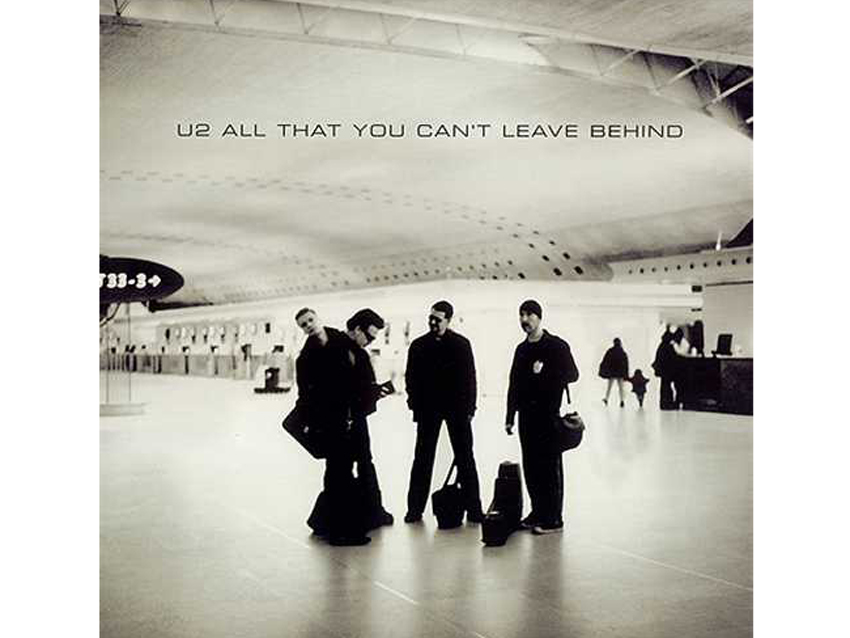
U2 - All That You Can't Leave Behind (2000)
“My manager, Sandy Roberton, suggested I do some mixes on the Michael Hutchence album. This was right after Michael had died, so that was quite a surreal experience. There was one song on the album that Bono had guested on. After I did this mix, Bono called me and said, ‘I love it. I really think you saved the song. I’ll be in touch about maybe doing some mixing on our album.’
“I was laughing to myself because my manager had told me beforehand, ‘Mix this song. Bono sings on it, he’ll love it, and you’ll be working on the new U2 album.’ And it turned out, he was right – that’s how it all happened! So all kudos to Sandy for that one.
“U2 are the hardest-working band I’ve ever known, and mixing for them isn’t a fast process. I usually spend a day, maybe two, working on any mix, but with U2 mixing is just part of the ongoing re-evaluating process. They’ll hear a mix and say, ‘OK, now we’ve heard it that way. Time to rethink things.’
“I could sometimes spend seven days on a mix, then go upstairs to dinner, and while eating, I would hear the band playing the same song in the recording room. I would say, ‘I recognize that song,’ and somebody would answer, ‘Oh, yeah. They’re re-recording it. After hearing the mix, they now think they can get a better groove going.’
“Nothing is finished with U2 until the final mastering is complete. Bono is often known to be in the mastering room adding backing vocals in the final minutes. They have an unwritten rule that nothing gets approved unless they all like it. So it's hard to get a mix approved because you have to make sure that firstly the band loves it, and then you have Daniel Lanois, Brian Eno, Steve Lillywhite – and then the label has to like it, as well.
“I remember one night after I did the mix for Elevation, the band turned up, and they all seemed to love it. They even applauded at the end of it. I called my wife and I said, ‘Well, I think that one is done. They loved it.’ And she said, ‘No, it isn’t. You’re fooling yourself.’ And she was right – I spent another week mixing it!"

Ozzy Osbourne - Down To Earth (2001)
“That was an interesting album. Sharon Osbourne asked me to make the record. She knew that I’d worked with David Bowie and Robert Plant, and of course, she knew that I was from England, so she figured I would get along well with Ozzy, which I did. He and I shared the same sense of humor and spent a lot of downtime in the studio listening to old Monty Python, Dad's Army and the Goon Show.
“It was a tough album to make because the personnel of the band was very in and out. Zakk was in the band, but then there would be a falling out and he’d be gone – but then he’d come back. I didn’t have time to wait around for all of these disagreements to be figured out; I was under pressure to deliver an album, so I had to just plow ahead.
“Reeves Gabrels came in and played guitar for a while, as I did, but I knew in the back of my mind that Zakk would return. Thankfully he did, because I think that what he does with Ozzy is phenomenal. He’s an incredible guitar player, especially for Ozzy’s style of music.
“When we finally got the whole crew in order, we went to A&M Studios. Ozzy was very open to some song ideas I had, and I wound up with a couple of songwriting credits, including the single Gets Me Through, which was a first for me. There were some very funny times in the studio trying to write lyrics with Ozzy. He’s a terrific guy to be around.
“There was one strange incident: Before I got involved with the record, Sharon had picked out the musicians. There was one player from the live band that Ozzy had been working with for a while, but he didn’t make it onto the album. He sort of put two and two together and decided that maybe it was me who had decided he wasn’t good enough, which of course was not true. I got a call from Ozzy halfway through the record telling me that I had to call the police – there were death threats being made against me. ‘We have messages on the office phone, Tim,’ he said. ‘Somebody wants to kill you.’
“The road manager confirmed this to me, and he said that he thought it was this particular musician, whom I won’t name, that had assumed I had fired him. So I basically rang this guy up and told him the facts – I didn’t fire him. But I also told him, ‘Guess what? Even if I did fire you, if you want to continue to work in the music business, get over it. These things happen. You’re a great musician, so move on.’
“I never heard anything from him again. Death threats are pretty strange, I must say.”

HIM - Dark Light (2005)
“The band was signed to Sire Records in America at the time. The record went gold in the States – the first time that a band from Finland had achieved that. They became heroes in their country.
“I had worked with them before on Love Metal, so when it came time to produce Dark Light, we had already gotten past the teething stage of figuring out how we worked best together. The album was made during a period when bands would rent out big houses in exotic locations to record their albums, so we decided to rent this huge Gothic house up in Silverlake. It was the place where they shot all of the Scream movies, so the vibe seemed perfect.
“I remember it was bloody cold most of the time, and they had dogs running around that would leave gifts for us to step in. Oh, and Playboy decided to shoot some videos up there while we were recording, so that was a distraction, albeit a nice one.
“The album featured a lot of textured guitars and keyboards. We really had fun with the 3D aspect and cinematic quality of the music. Originally, the record company wanted somebody else to mix the album. I will mention no names, but I said, ‘Why would you do that? I mixed the band's last record, and it was a big success. Let me mix the album, and if you don’t like it, maybe at that point you should get somebody else.’ They disagreed.
“So they went ahead, wasted a ton of money and tried it, but it didn’t work out. I ended up mixing it myself at Electric Lady. I’m very happy with how that album finally came out.”

Switchfoot - Oh! Gravity (2006)
“It was a brave move for them to have an atheist as a producer, but It worked out very well. They were a wonderful bunch of guys. They’re a bit like U2 – extremely hard workers. They would say to me, ‘We’ve got a basic idea for a song. Let's work on the arrangement together.’ That really appealed to me because I love trying to figure things out with really talented people in situations where I can contribute and feel like I'm part of the band.
“We all worked closely together on the album. I was recording in Carlsbad, CA, with the band for quite an extended period of time, which was a bonus. It was a Pro Tools record, and I must say that, at that time, the band were more efficient with Pro Tools than I was.
“It was fascinating for me to watch the way they worked. For example, Tim, the bass player, would say to me, ‘Send me those three bass tracks we just recorded.’ He’d upload them to his computer, disappear for a while and then send me back a single file. ‘I just compiled the bass track for you. There it is.’ I thought that was impressive.
“John Foreman, the singer, a total star, said to me, ‘I really like singing in my closet at home. Do you mind if I do that?’ And I said, ‘You can do whatever you want, mate.’ He’d go and sing and at home, and then he’d bring back what he’d done, which was usually great. We would compile all the best parts the next morning at the studio. It was fascinating – everybody was using technology to its fullest.”
Joe is a freelance journalist who has, over the past few decades, interviewed hundreds of guitarists for Guitar World, Guitar Player, MusicRadar and Classic Rock. He is also a former editor of Guitar World, contributing writer for Guitar Aficionado and VP of A&R for Island Records. He’s an enthusiastic guitarist, but he’s nowhere near the likes of the people he interviews. Surprisingly, his skills are more suited to the drums. If you need a drummer for your Beatles tribute band, look him up.
